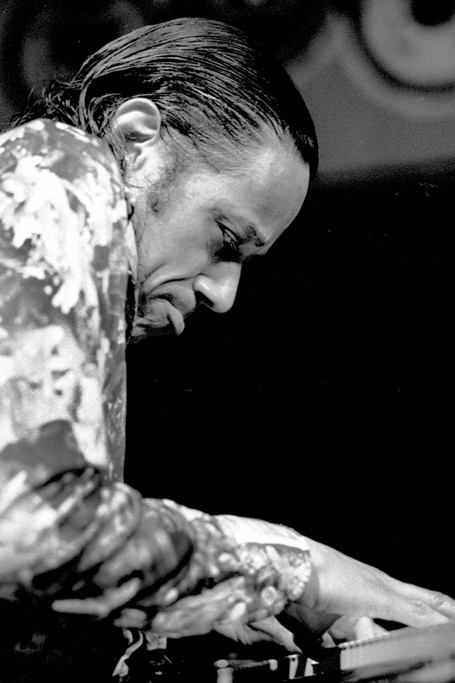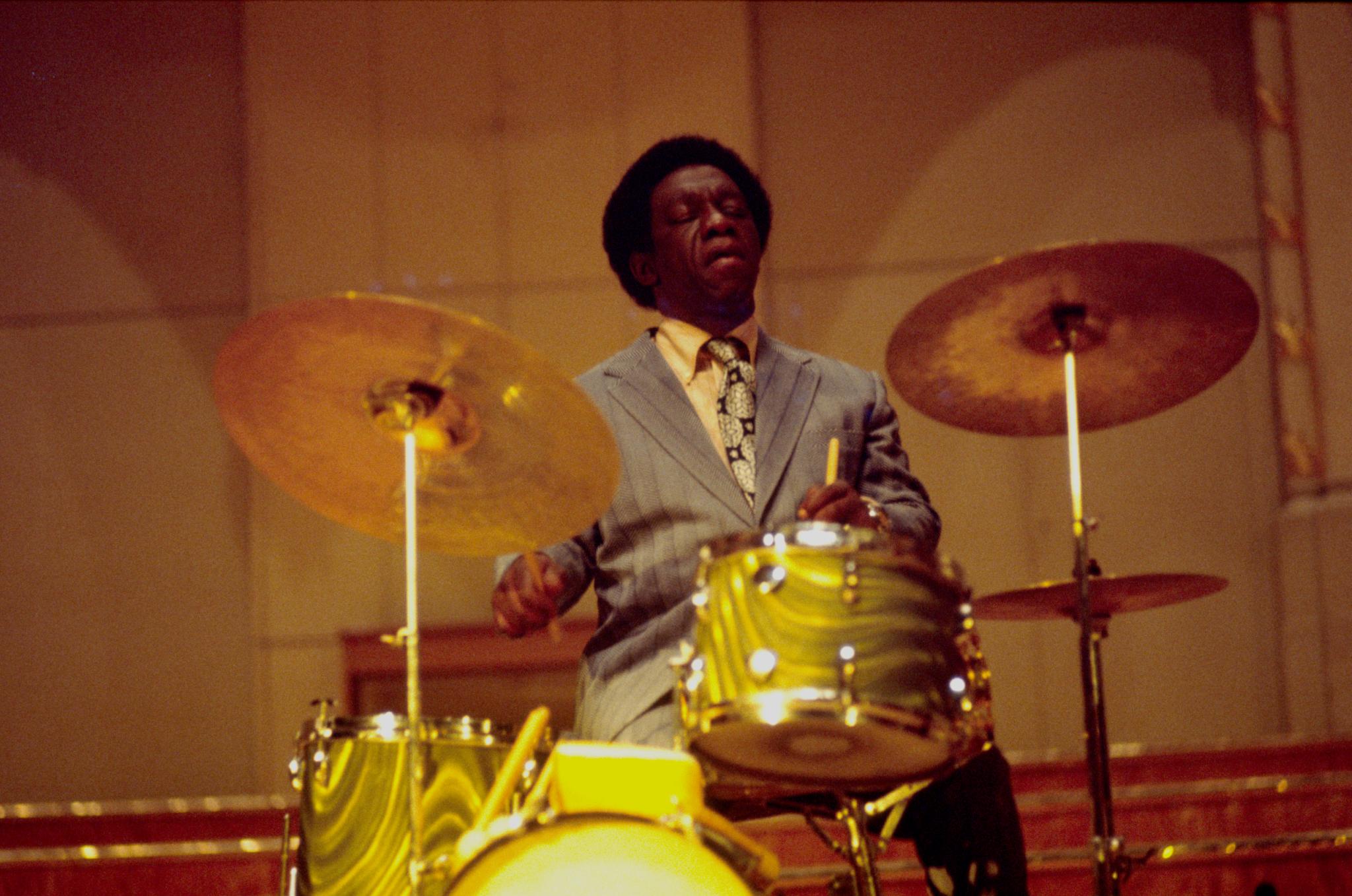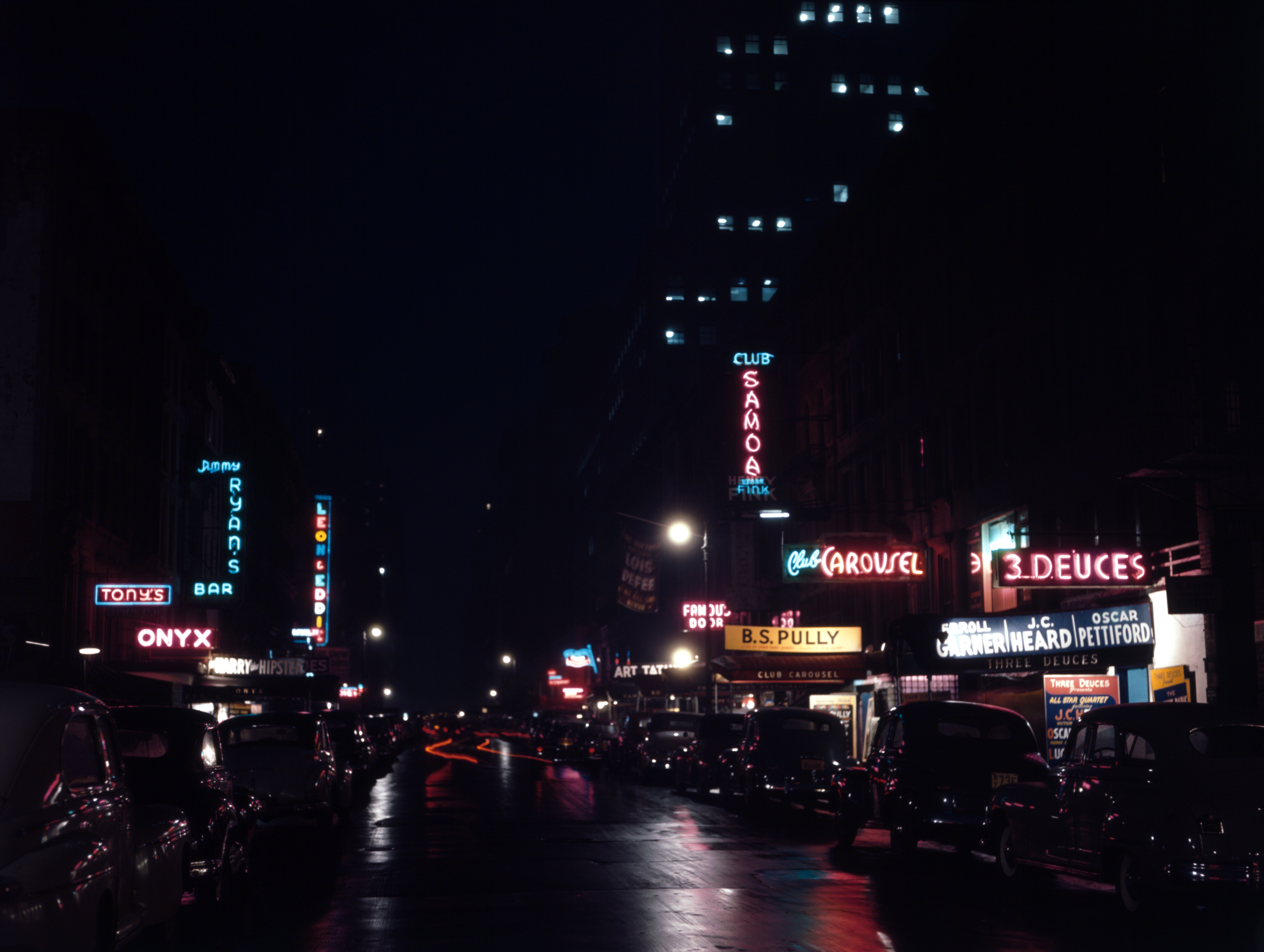|
Horace Silver And The Jazz Messengers
''Horace Silver and the Jazz Messengers'' is a 1956 repackage of 1955 10” LPs by jazz pianist Horace Silver with drummer Art Blakey and featuring Hank Mobley on tenor saxophone, Kenny Dorham on trumpet, and Doug Watkins on bass. By the time this repackage was released, this quintet had named themselves the Jazz Messengers, and the band name on the label reflected that. These recordings helped establish the hard bop style. Scott Yanow on Allmusic describes it as "a true classic". Originally released as an LP, the album has subsequently been reissued on CD several times. Background ''Horace Silver and the Jazz Messengers'' was the first 12" Blue Note album released under Silver’s name. The album is a reissue of two previous 10" LPs -- ''Horace Silver Quintet'' (BLP 5058) and ''Horace Silver Quintet, Vol. 2'' (BLP 5062) -- and the first sessions in which he used the quintet format which he would largely use for the rest of his career. The music on the album mixes bebop influ ... [...More Info...] [...Related Items...] OR: [Wikipedia] [Google] [Baidu] |
Horace Silver
Horace Ward Martin Tavares Silver (September 2, 1928 – June 18, 2014) was an American jazz pianist, composer, and arranger, particularly in the hard bop style that he helped pioneer in the 1950s. After playing tenor saxophone and piano at school in Connecticut, Silver got his break on piano when his trio was recruited by Stan Getz in 1950. Silver soon moved to New York City, where he developed a reputation as a composer and for his bluesy playing. Frequent sideman recordings in the mid-1950s helped further, but it was his work with the Jazz Messengers, co-led by Art Blakey, that brought both his writing and playing most attention. Their ''Horace Silver and the Jazz Messengers'' album contained Silver's first hit, " The Preacher". After leaving Blakey in 1956, Silver formed his own quintet, with what became the standard small group line-up of tenor saxophone, trumpet, piano, bass, and drums. Their public performances and frequent recordings for Blue Note Records increased Silver ... [...More Info...] [...Related Items...] OR: [Wikipedia] [Google] [Baidu] |
Art Blakey
Arthur Blakey (October 11, 1919 – October 16, 1990) was an American jazz drummer and bandleader. He was also known as Abdullah Ibn Buhaina after he converted to Islam for a short time in the late 1940s. Blakey made a name for himself in the 1940s in the big bands of Fletcher Henderson and Billy Eckstine. He then worked with bebop musicians Thelonious Monk, Charlie Parker, and Dizzy Gillespie. In the mid-1950s, Horace Silver and Blakey formed the Jazz Messengers, a group that the drummer was associated with for the next 35 years. The group was formed as a collective of contemporaries, but over the years the band became known as an incubator for young talent, including Freddie Hubbard, Wayne Shorter, Lee Morgan, Benny Golson, Kenny Dorham, Hank Mobley, Donald Byrd, Jackie McLean, Johnny Griffin, Curtis Fuller, Chuck Mangione, Chick Corea, Keith Jarrett, Cedar Walton, Woody Shaw, Terence Blanchard, and Wynton Marsalis. ''The Biographical Encyclopedia of Jazz'' calls the ... [...More Info...] [...Related Items...] OR: [Wikipedia] [Google] [Baidu] |
Tenor Saxophone
The tenor saxophone is a medium-sized member of the saxophone family, a group of instruments invented by Adolphe Sax in the 1840s. The tenor and the alto are the two most commonly used saxophones. The tenor is pitched in the key of B (while the alto is pitched in the key of E), and written as a transposing instrument in the treble clef, sounding an octave and a major second lower than the written pitch. Modern tenor saxophones which have a high F key have a range from A2 to E5 (concert) and are therefore pitched one octave below the soprano saxophone. People who play the tenor saxophone are known as "tenor saxophonists", "tenor sax players", or "saxophonists". The tenor saxophone uses a larger mouthpiece, reed and ligature than the alto and soprano saxophones. Visually, it is easily distinguished by the curve in its neck, or its crook, near the mouthpiece. The alto saxophone lacks this and its neck goes straight to the mouthpiece. The tenor saxophone is most recognized for it ... [...More Info...] [...Related Items...] OR: [Wikipedia] [Google] [Baidu] |
Trumpet
The trumpet is a brass instrument commonly used in classical and jazz ensembles. The trumpet group ranges from the piccolo trumpet—with the highest register in the brass family—to the bass trumpet, pitched one octave below the standard B or C trumpet. Trumpet-like instruments have historically been used as signaling devices in battle or hunting, with examples dating back to at least 1500 BC. They began to be used as musical instruments only in the late 14th or early 15th century. Trumpets are used in art music styles, for instance in orchestras, concert bands, and jazz ensembles, as well as in popular music. They are played by blowing air through nearly-closed lips (called the player's embouchure), producing a "buzzing" sound that starts a standing wave vibration in the air column inside the instrument. Since the late 15th century, trumpets have primarily been constructed of brass tubing, usually bent twice into a rounded rectangular shape. There are many distinc ... [...More Info...] [...Related Items...] OR: [Wikipedia] [Google] [Baidu] |
Doodlin' (Horace Silver Song)
"Doodlin'" is a composition by Horace Silver. The original version, by Silver's quintet, was recorded on November 13, 1954. It was soon covered by other musicians, including with lyrics added by Jon Hendricks. It has become a jazz standard. Composition "Doodlin'" is a 12-bar blues.Cook, Richard (2004), ''Blue Note Records – The Biography''. Justin, Charles & Co., p. 73. Reviewer Bill Kirchner suggests: "Take a simple riff, rhythmically displace it several times over D-flat blues harmonies, resolve it with a staccato, quasi-humorous phrase, and you have 'Doodlin' '." Original recording The original version featured Silver on piano, with Hank Mobley (tenor saxophone), Kenny Dorham (trumpet), Doug Watkins (bass), and Art Blakey (drums). It is played as a "medium-tempo blues with a two-beat feel".Rosenthal, David H. (1993), ''Hard Bop: Jazz and Black Music, 1955–1965''. Oxford University Press, p. 38. Silver's solo is largely blues-based, with little influence from bebop, and is ... [...More Info...] [...Related Items...] OR: [Wikipedia] [Google] [Baidu] |
The Preacher (Horace Silver Song)
"The Preacher" is a composition by Horace Silver. The original version was recorded by Silver's quintet on February 6, 1955. It was soon covered by other musicians, including with lyrics added by Babs Gonzales. It has become a jazz standard. Composition "The Preacher" is based on the chords of "Show Me the Way to Go Home", which Silver often used to end his concerts. He wrote it in the Arlington Hotel on Twenty-Fifth Street in New York City, where he lived for four years from 1954. Original recording The original version featured Silver on piano, with Hank Mobley (tenor saxophone), Kenny Dorham (trumpet), Doug Watkins (bass), and Art Blakey (drums). "Fired by the song's rocking beat, Dorham and Mobley soar into blues-drenched, vocally inflected solos. Silver follows with a typically stripped-down statement, built around first a two-chord percussive figure and then a descending run, each repeated. Before taking the tune out, the band riffs behind his funky noodling in classic call ... [...More Info...] [...Related Items...] OR: [Wikipedia] [Google] [Baidu] |
Gospel Music
Gospel music is a traditional genre of Christian music, and a cornerstone of Christian media. The creation, performance, significance, and even the definition of gospel music varies according to culture and social context. Gospel music is composed and performed for many purposes, including aesthetic pleasure, religious or ceremonial purposes, and as an entertainment product for the marketplace. Gospel music is characterized by dominant vocals and strong use of harmony with Christian lyrics. Gospel music can be traced to the early 17th century. Hymns and sacred songs were often repeated in a call and response fashion, heavily influenced by ancestral African music. Most of the churches relied on hand-clapping and foot-stomping as rhythmic accompaniment. Most of the singing was done a cappella.Jackson, Joyce Marie. "The changing nature of gospel music: A southern case study." ''African American Review'' 29.2 (1995): 185. Academic Search Premier. EBSCO. Web. October 5, 2010. The ... [...More Info...] [...Related Items...] OR: [Wikipedia] [Google] [Baidu] |
Blues
Blues is a music genre and musical form which originated in the Deep South of the United States around the 1860s. Blues incorporated spirituals, work songs, field hollers, shouts, chants, and rhymed simple narrative ballads from the African-American culture. The blues form is ubiquitous in jazz, rhythm and blues, and rock and roll, and is characterized by the call-and-response pattern (the blues scale and specific chord progressions) of which the twelve-bar blues is the most common. Blue notes (or "worried notes"), usually thirds, fifths or sevenths flattened in pitch, are also an essential part of the sound. Blues shuffles or walking bass reinforce the trance-like rhythm and form a repetitive effect known as the groove. Blues as a genre is also characterized by its lyrics, bass lines, and instrumentation. Early traditional blues verses consisted of a single line repeated four times. It was only in the first decades of the 20th century that the most common current str ... [...More Info...] [...Related Items...] OR: [Wikipedia] [Google] [Baidu] |
Bebop
Bebop or bop is a style of jazz developed in the early-to-mid-1940s in the United States. The style features compositions characterized by a fast tempo, complex chord progressions with rapid chord changes and numerous changes of key, instrumental virtuosity, and improvisation based on a combination of harmonic structure, the use of scales and occasional references to the melody. Bebop developed as the younger generation of jazz musicians expanded the creative possibilities of jazz beyond the popular, dance-oriented swing music-style with a new "musician's music" that was not as danceable and demanded close listening.Lott, Eric. Double V, Double-Time: Bebop's Politics of Style. Callaloo, No. 36 (Summer, 1988), pp. 597–605 As bebop was not intended for dancing, it enabled the musicians to play at faster tempos. Bebop musicians explored advanced harmonies, complex syncopation, altered chords, extended chords, chord substitutions, asymmetrical phrasing, and intricate melodi ... [...More Info...] [...Related Items...] OR: [Wikipedia] [Google] [Baidu] |
LP Album
The LP (from "long playing" or "long play") is an analog sound storage medium, a phonograph record format characterized by: a speed of rpm; a 12- or 10-inch (30- or 25-cm) diameter; use of the "microgroove" groove specification; and a vinyl (a copolymer of vinyl chloride acetate) composition disk. Introduced by Columbia in 1948, it was soon adopted as a new standard by the entire record industry. Apart from a few relatively minor refinements and the important later addition of stereophonic sound, it remained the standard format for record albums (during a period in popular music known as the album era) until its gradual replacement from the 1980s to the early 2000s, first by cassettes, then by compact discs, and finally by digital music distribution. Beginning in the late 2000s, the LP has experienced a resurgence in popularity. Format advantages At the time the LP was introduced, nearly all phonograph records for home use were made of an abrasive shellac compound ... [...More Info...] [...Related Items...] OR: [Wikipedia] [Google] [Baidu] |
Allmusic
AllMusic (previously known as All Music Guide and AMG) is an American online music database. It catalogs more than three million album entries and 30 million tracks, as well as information on musicians and bands. Initiated in 1991, the database was first made available on the Internet in 1994. AllMusic is owned by RhythmOne. History AllMusic was launched as ''All Music Guide'' by Michael Erlewine, a "compulsive archivist, noted astrologer, Buddhist scholar and musician". He became interested in using computers for his astrological work in the mid-1970s and founded a software company, Matrix, in 1977. In the early 1990s, as CDs replaced LPs as the dominant format for recorded music, Erlewine purchased what he thought was a CD of early recordings by Little Richard. After buying it he discovered it was a "flaccid latter-day rehash". Frustrated with the labeling, he researched using metadata to create a music guide. In 1990, in Big Rapids, Michigan, he founded ''All Music Guide' ... [...More Info...] [...Related Items...] OR: [Wikipedia] [Google] [Baidu] |
Scott Yanow
Scott Yanow (born October 4, 1954) is an American jazz reviewer, historian, and author.Allmusic Biography/ref> Biography Yanow was born in New York City and grew up near Los Angeles. Since 1974, he was a regular reviewer of many jazz styles and was the jazz editor for ''Record Review.'' He wrote for many jazz and arts magazines, including ''JazzTimes'', ''Jazziz'', ''Down Beat'', ''Cadence'', ''CODA'' and the ''Los Angeles Jazz Scene''. In September 2002, Yanow was interviewed on-camera by CNN about the Monterey Jazz Festival and wrote an in-depth biography on Dizzy Gillespie for AllMusic.com. He authored 12 books on jazz (including 2022's Life Through The Eyes Of A Jazz Journalist), over 900 liner notes for CDs and over 20,000 reviews of jazz recordings. Yanow was a contributor to and co-editor of the third edition of the ''All Music Guide to Jazz''. He continues to write for ''Downbeat, Jazziz'', the ''Los Angeles Jazz Scene'', "Syncopated Times," "Jazz Artistry Now," the ''J ... [...More Info...] [...Related Items...] OR: [Wikipedia] [Google] [Baidu] |





